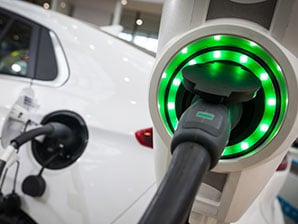The bear markets that start with huge losses in the first four months last as long as those that do not. That should be pointed out because, after hitting the high point on the first day of the 2022 trading session, major US stock market indicators have lost considerably. Dow Jones Industrial Average's DJIA, -1.99% January-until April delcine was the worst start of the calendar year since 1939, for example. The comparative loss of the Nasdaq Composite COMP, -4.29% has been the worst start of any year in its history. (Built in 1971).
Elon Musk thinks Twitter’s algorithm should be public. Here’s what that could mean
On March 24, a few weeks before he promised to buy Twitter, Elon Musk posted a survey on social media: "Twitter's algorithm should be open source," he wrote, with ways for users to vote "yes" or "no." Some Twitter technology is already open source, which means it is publicly available for anyone to ...
Amazon ordered to reinstate warehouse worker who was fired after protest
Stock
Amazon is facing legal consequences for its history of expelling protest participants. Reports that Judge Benjamin Green has ordered Amazon to reinstate warehouse employee Gerald Bryson, who was fired from his position at the JFK8 facility on Staten Island (recently voted for merger) after allegedly violating language policies during COVID security. -1...
How dependent on Elon Musk’s comments is the crypto industry?
Stock
Elon Musk is the second richest man in the world, with an estimated net worth of $ 155bn. He has founded some of the world’s most successful tech companies from PayPal to Tesla, and his voice weighs heavily on technology circles, but his influence on the crypto market is astoundi...
They just revealed what they believe are the ten best stocks for investors to buy right now…
Courtesy Grizler.com
SPONSORED HEADLINES
It is not yet clear why these factoids are important. Even if the current stock market reform becomes a bear market, the market loss rate over the past four months does not give us an idea of how long the bear market will last.
To illustrate this, I have analyzed all bear markets from 1900 on the bear market calendar maintained by Ned Davis Research. I removed those bear markets that did not last four months, such as the fall of February-March 2020, which lasted only 33 calendar days. There are 32 bear markets left.
These 32 bear markets are listed in the chart below. Note the lack of any correlation between the magnitude of the bear market loss in the first four months and the final length of the bear market. The chart also shows a double r of the trendline that best matches data points, and is actually zero - indicating that there is no statistically significant relationship between the two data sets.
Take the tallest bear market on the Ned Davis Research calendar, which lasted from September 1939 to April 1942. Dow losses in the first four months of that bear market were just 4.9%, one of the smallest losses to start any bear markets.
What about the loss of bear markets?
The same conclusion is reached from the length of the bear market to the magnitude of its loss. At the 95% confidence level mathematicians usually use when determining a pattern to be true, there is no correlation between the magnitude of the loss in the first four months of the bear market and its loss after those first four months.
This is also reflected in the 1939-42 bear market. After losing 4.9% in its first four months, Dow in the remainder of that bear market lost 37.3%. That is almost double the average loss of the bear market from its four-month mark to its end.
The main point? US stocks lost power over the past four months at an unusually high rate. But even if the current correction turns into a full-fledged bear market, a four-month rapid market downturn does not tell us how long that bear market will last or how long the market will decline before it reaches the bottom.
We should not be surprised at this result. The stock market is a forward-looking, discounted way. Where it comes from here will not be a function of what has happened so far, as that is already evident at its current level. Its future performance will depend on whether things are better or worse than what all investors now expect.




